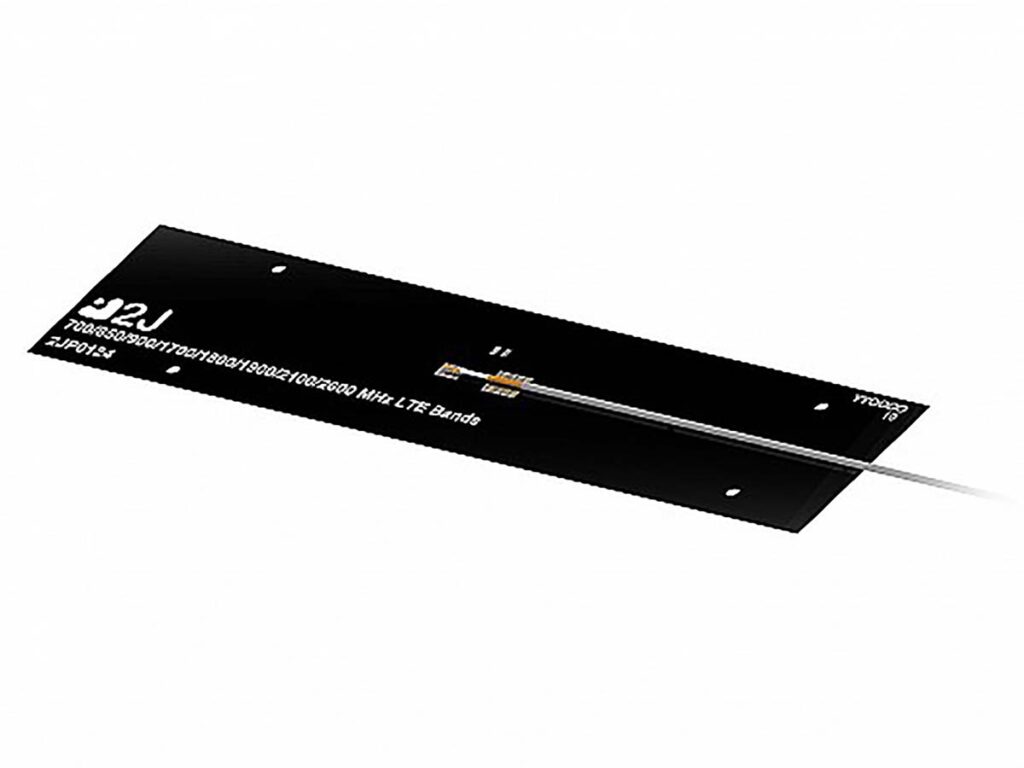
Introduction
In the era of advanced wireless communication, antennas have evolved from bulky external components into compact, integrated solutions capable of supporting multiple frequency bands. One of the most innovative examples of this evolution is the 2J Multiband PCB Antenna. Designed to meet the growing demands of connected devices, this antenna offers exceptional performance, high efficiency, and versatility across multiple wireless standards. As industries increasingly depend on electronic communication systems—from smart devices and IoT networks to automotive and industrial automation—the 2J Multiband PCB Antenna has become an essential component in achieving seamless connectivity and optimized performance.
Understanding the 2J Multiband PCB Antenna
The 2J Multiband PCB Antenna is a surface-mounted antenna specifically engineered to operate efficiently across several frequency bands. Unlike traditional single-band antennas, it can transmit and receive signals for multiple wireless technologies such as LTE, GSM, Wi-Fi, Bluetooth, and GNSS within a single compact form factor. This makes it ideal for applications where space is limited but connectivity is essential.
PCB (Printed Circuit Board) antennas like the 2J model are integrated directly into the circuit board, minimizing external components while maintaining high signal performance. This integration reduces assembly complexity, enhances durability, and ensures consistent performance across various environments.
Technical Design and Construction
The design of the 2J Multiband PCB Antenna incorporates advanced electromagnetic and electronic engineering principles to achieve broad frequency coverage. It is typically constructed from FR4 or ceramic substrates with precisely defined conductive patterns to optimize signal propagation. The compact design allows it to fit easily into small electronic devices such as routers, automotive telematics modules, and smart sensors.
The antenna’s multilayer structure ensures low signal loss and consistent impedance matching across different frequency ranges. Engineers use simulation tools like CST and HFSS during development to optimize parameters such as bandwidth, gain, and radiation efficiency. The result is an antenna that delivers excellent performance across multiple communication protocols without requiring external tuning.
Features and Benefits of the 2J Multiband PCB Antenna
The 2J Multiband PCB Antenna offers a wide range of advantages that make it suitable for both commercial and industrial applications.
- Compact size ideal for space-constrained electronic devices
- Supports multiple frequency bands, reducing the need for separate antennas
- Easy integration with standard PCB designs and SMT assembly processes
- Consistent impedance matching and stable gain across frequency ranges
- High durability against environmental factors such as heat, humidity, and vibration
- Optimized performance for IoT, M2M, and smart communication systems
These benefits make it a preferred choice for manufacturers seeking to design compact, reliable, and high-performing wireless devices.
Working Principle and Frequency Bands
The 2J Multiband PCB Antenna operates on the principle of resonant frequency, where specific antenna geometries are tuned to resonate at multiple frequencies simultaneously. This design allows it to efficiently radiate and receive electromagnetic energy across various wireless bands.
Typical supported frequency ranges include GSM (850/900/1800/1900 MHz), LTE (700–2700 MHz), Wi-Fi (2.4/5 GHz), and GPS/GNSS (1575 MHz). The antenna’s wideband design ensures compatibility with cellular networks, satellite positioning systems, and wireless local area networks, enabling multifunctional connectivity in a single device.
Applications Across Industries
The versatility of the 2J Multiband PCB Antenna makes it applicable in a wide range of industries where reliable wireless communication is essential.
IoT and Smart Devices
The antenna plays a vital role in the Internet of Things, where multiple devices communicate wirelessly in real time. It enables stable connectivity in smart meters, home automation systems, and wearable electronics.
Automotive and Telematics Systems
In modern vehicles, connectivity is key to navigation, infotainment, and safety features. The 2J Multiband PCB Antenna supports vehicle telematics, GPS tracking, and remote monitoring by providing consistent signal reception under varying environmental conditions.
Industrial Automation
In industrial settings, the antenna facilitates machine-to-machine communication, remote monitoring, and control of automated systems. Its robust design ensures uninterrupted performance in electrically noisy environments.
Telecommunications and Networking
Routers, gateways, and modems rely on multiband antennas to support diverse frequency requirements. The 2J Multiband PCB Antenna offers a space-efficient solution for high-speed data transmission in communication networks.
Aerospace and Defense Electronics
In aerospace and defense applications, where reliability and precision are non-negotiable, this antenna provides stable communication links for navigation and remote data transmission. Its lightweight and durable construction makes it suitable for compact electronic modules used in critical operations.
Integration with Electronic Circuits
Integrating the 2J Multiband PCB Antenna into electronic systems requires precise design considerations to maintain optimal performance. Factors such as ground plane size, antenna placement, and nearby components affect signal strength and radiation patterns. Engineers must ensure sufficient ground clearance and minimal interference from metallic enclosures or power circuits.
Many 2J antennas come with reference design files, helping engineers integrate them effectively during PCB layout. These resources include guidelines for impedance matching, trace routing, and connector positioning to ensure consistent RF performance across prototypes and production runs.
Performance Optimization and Testing
Testing plays a vital role in ensuring that the 2J Multiband PCB Antenna meets performance expectations. Manufacturers use electronic testing equipment such as vector network analyzers, anechoic chambers, and signal generators to measure critical parameters including VSWR (Voltage Standing Wave Ratio), return loss, and radiation efficiency.
By analyzing these parameters, engineers can fine-tune antenna design and placement to minimize signal reflection and maximize gain. This process ensures that the antenna maintains high reliability and stable connectivity in real-world operating conditions.
Compatibility with Modern Communication Technologies
The 2J Multiband PCB Antenna is designed to meet the requirements of evolving wireless standards. It supports modern cellular technologies such as 4G LTE and 5G NR, as well as IoT communication protocols like LoRa, NB-IoT, and Zigbee. Its broadband characteristics make it future-proof, allowing it to integrate seamlessly into next-generation electronic systems without hardware redesign.
Additionally, the antenna’s ability to handle multiple protocols simultaneously makes it suitable for hybrid systems where data transmission, navigation, and wireless control coexist within a single device.
Environmental Durability and Reliability
The 2J Multiband PCB Antenna is built to withstand diverse environmental conditions. Its materials resist thermal expansion, corrosion, and mechanical stress, ensuring stable performance over time. Whether deployed in outdoor communication systems or embedded within compact consumer electronics, it maintains consistent operation across temperature variations and humidity levels.
This level of durability makes it suitable for applications that demand reliability in harsh environments, such as transportation systems, remote monitoring stations, and mobile communication equipment.
Conclusion
The 2J Multiband PCB Antenna represents a significant step forward in antenna technology, combining compact design with broad frequency coverage and electronic integration. Its ability to support multiple communication protocols within a small footprint has made it a cornerstone of modern connectivity. From IoT devices and telecommunication equipment to automotive electronics and industrial control systems, it ensures reliable, high-speed wireless performance across diverse environments. As technology continues to evolve toward greater automation and interconnectivity, the 2J Multiband PCB Antenna stands as a crucial component driving the future of smart electronics, enabling innovation and efficiency in every connection.
